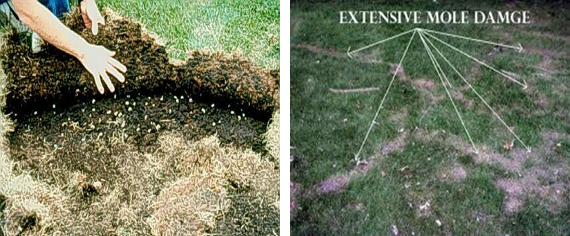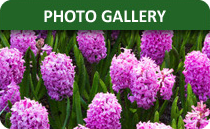Additional Services
Shrub Trimming/ Fall & Spring Clean Up:
We recommend trimming your shrubs 2 - 4 times per year depending on your personal preference and types of plant materials you have. We trim all of our homes as though they were our own. With each shrub trimming we also weed and clean out the beds. The fee is $40.00 per man per hour.
Clean up work is priced at $40.00 per man per hour. We will clean up all landscape debris from the property. Prune your shrubs and trees and get your landscape back in shape for the new season
Mulch and Pine Straw:
We use only the best shredded hardwood mulch and pine straw available for your landscape beds. Mulch holds moisture and regulates temperatures naturally while keeping your flower beds looking clean and well maintained.
Shredded Hardwood Mulch is $8.00 per bag and up depending on your choice of colored or non- colored mulch.
*Bagged mulch comes in a 2 cubic ft bags, most homes require 20-40 bags. This gives you a 1" - 1 ½" depth.
We also offer non bagged mulch. This comes in many colors and sizes. Ask about or other mulch options and pricing.
We use North Carolina Long Needle pine straw for our installations.
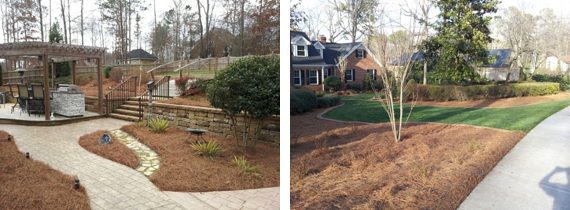
Ask about our rates for pine straw installation
Seasonal Flowers:
Our seasonal flowers come in a flat of 18 4inch pots and up. We add fresh garden soil and fertilizer to all flower bed installs. Flower installation is priced at 6.50 per sq ft. Due to the delicate nature of seasonal flowers we do not offer a warranty. We do maintain the beds as far as weeding and fertilization if included in your service plan.
Lawn Aerations:
Let us improve the health of your lawn by aerating your soil. Lawn aeration or core aeration helps by pulling up plugs of soil and then allowing air, water, and nutrients to reach the roots of your grass. Lawn aeration will help strengthen the roots and allow them to grow deeper. Strong roots in grass will help make it look very green and more beautiful. We suggest doing this once a year.
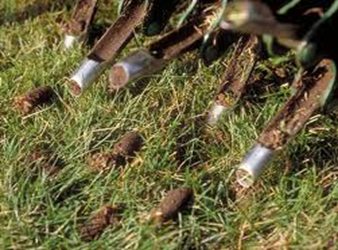
Slit Seeding:
If you have ever renovated your lawn, you know how big of a chore it can be. If you are replacing it manually, you first have to remove the old grass, then prepare the seedbed, spread the seeds and keep them moist until they germinate. By using a slit seeder, you can make a few of those processes much easier---virtually no seedbed preparation and you don't have to spread the seeds by hand. The slit seeder doesn't need a prepared seedbed because it injects the seeds right into the ground. This gives the best results usually for re-seeding.
Thatching:
Thatch is a dense mat of roots, stems and grass clippings that accumulate between the soil and growing blades of grass throughout the year. This can be caused by allowing your grass to grow too long and not bagging it. Or just allowing grass clippings over the years to build up.
With thatch removed, air, water, nutrients, herbicides and pesticides can do their job. Turf becomes healthier and more resistant to insect damage and disease.
Dethatching removes summer-damaged grass and moss. Dethatching if done at regular intervals promotes denser growth and ensures that you'll have a vibrant lawn. We recommend doing this every other year. Some yards require ever year.
Fertilizer Programs:
Our lawn fertilization goes above and beyond that of our competitors to give you the most beautiful property at a reasonable price. Our All Inclusive Lawn program includes 8 custom fertilization and Pre-emergent weed control applications that are guaranteed to give you a thick, healthy turf.
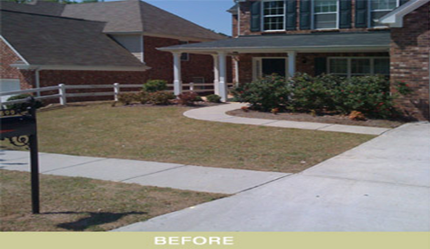
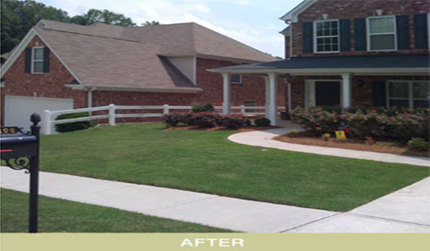
We also provide Organic fertilizer options for those of you that are more environmentally conscience. Let us help you design the organic program that works best for your lawn and budget.
We provide Post-emergent weed control applications that target weeds and foreign grasses without damaging or destroying your turf. Depending on your needs and budget we can provide you with any service you require.
As always, Southern Tree & Landscaping offers 100% satisfaction. It's really very simple! Southern Tree & landscaping doesn't want any unhappy customers. We go to great lengths to make sure every customer we serve is 100% satisfied 100% of the time. We work hard to be responsive to your service requests and to any questions or concerns that may arise. We believe that's what good service is all about.
Turf Disease Programs:
Brown Patch Fungus and other diseases can be disastrous to the lawn in the summer. All turf types can be inflicted with disease. However, fescue is severely damaged from Brown Patch Fungus more often than warm season grass during the summer months of May through September. Brown Patch Fungus activates when climatic conditions are favorable. Brown Patch Fungus activates on healthy growing turf when temperatures are 75 degrees with atmospheric moisture. This moisture can be in the form of rainfall, irrigation or humidity. The best way to determine if the lawn has a disease is to look at the leaf blade for lesions. Drought stress has a folded leaf blade and a straw appearance.
Southern Tree & Landscaping offers a disease prevention program. Due to new high performing fungicides, we can offer up to 30-day control of Brown Patch Fungus. This program will consist of 3 to 4 disease control applications during the peak disease season, which runs from May to September. Even if you have active Brown Patch at the time of application, this application will stop further damage and control reoccurrence up to 30-days. As you may know from past experience with your lawn, any disease can be devastating and will cause permanent damage to your grass
CRITICAL CARE LAWN PROGRAM
Winter:
Liquid and or granular application of pre- and post-emergent weed controls. Controls winter grasses, henbit, chickweed and other broadleaf weeds.
Early Spring:
Liquid and or granular application of pre- and post-emergent weed controls for crabgrass and broadleaf weeds such as dandelions, thistle and henbit. Liquid and or granular fertilizer mixed with herbicides.
Spring:
Granular and/or liquid application of slow-release, balanced fertilizer to stimulate spring "green-up." Weed control applied as needed.
Early Summer:
Granular and/or liquid application of slow-release, balanced fertilizer. Weed control applied as needed.
Summer:
Granular and/or liquid application of a slow-release, balanced fertilizer. Weed control applied as needed.
Late Summer
Granular and/or liquid application of slow-release, balanced fertilizer. Weed control applied as needed.
Fall:
Liquid and or granular application of slow-release starter fertilizers to help and aid the germination and growth of cool weather grasses that would be added to properties during re-seeding in the fall.
Winter:
Liquid and or granular application of slow-release starter fertilizers (winterizer) to help and aid the growth of new seed. Liquid and or granular application of pre and post-emergent weed controls to extend the winter weed protection.
Tips to Watering Your Lawn
A healthy green lawn requires proper watering. Generally your lawn needs 1-2 inches of water per week depending on the season. Below is the watering schedule we recommend for our customers with fescue yards.
The months of December, January, February and the beginning of March your system should be off to prevent the chance that frost might damage the system.
March - Set up your irrigation system and make sure everything is running properly once the chance of frost has past. Start watering one time per week in the early morning for 10-15 minutes per station. For stations that have rotary heads you will want to water 15-25 minutes.
April - Water 2 times per week in the early morning for 10-15 minutes per station. For stations that have rotary heads you will want to water 15-25 minutes.
May - Water 3-4 times per week. 2 days per week, two times each day. The 1st time should be in the early morning before 6am. The 2nd time the same evening around 10-12pm for 10-15 minutes each station.
June - Water 3-4 times per week. 2 days per week, two times each day. The 1st time should be in the early morning before 6am. The 2nd time the same evening around 10-12pm for 10-15 minutes each station.
July - Water 3-4 times per week. 2 days per week, two times each day. The 1st time should be in the early morning before 6am. The 2nd time the same evening around 10-12pm for 10-15 minutes each station.
August - Water 3-4 times per week. 2 days per week, two times each day. The 1st time should be in the early morning before 6am. The 2nd time the same evening around 10-12pm for 10-15 minutes each station.
September - Water 2-3 times per week in the early morning for 10-15 minutes per station. For stations that have rotary heads you will want to water 15-25 minutes.
October - Water 2-3 times per week in the early morning for 10-15 minutes per station. For stations that have rotary heads you will want to water 15-25 minutes.
November - Water 2 times per week during the beginning of the month in the morning for 10-15 min. Make sure to pay attention to the weather and any chances of frost. You will want to make sure you winterize and remove your back flow before it has a chance to be damaged by frost. If there is consistent rain no watering is needed.
*Typical time for winterizing your irrigation system is by Thanksgiving.
April - October is the most important months for watering. If you see dry areas try increasing the amount of water that those areas get. This recommended watering schedule could very each month depending on temperatures.
If temperatures are hotter than average with less than average rain fall you will want to water more often. If temperatures are cooler than average with higher than normal rain fall you can water less.
Pest/Insect Management and Treatment:
Pest and Insects can be just as damaging as disease issues. We offer targeted treatments to nesting and breeding sites, as well as, continued long-term preventative control programs. We can help protect your lawn from pest infestations including:
• Carpenter Ants, Grubs, Fire Ants, Pharaoh Ants, Bag Worms, Moles and many more.
